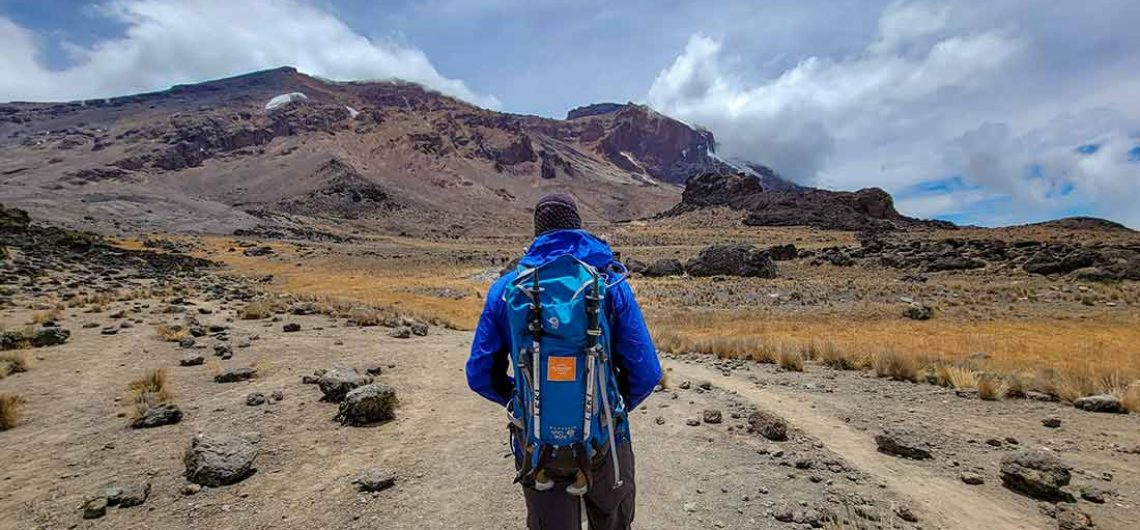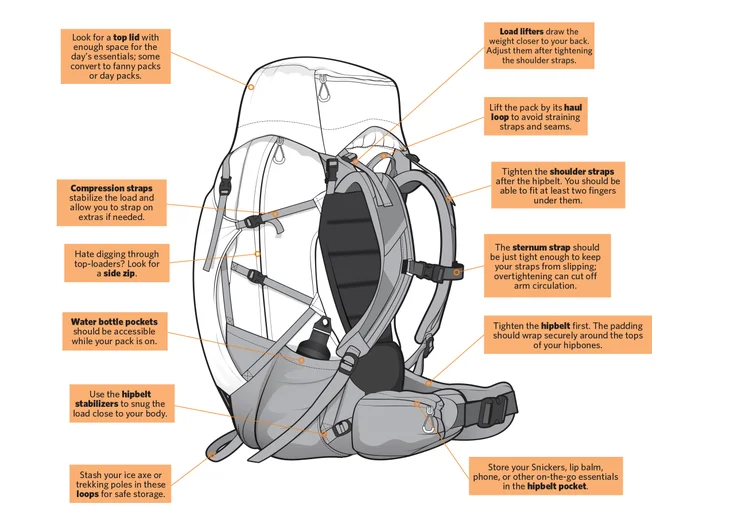Choosing the right backpack for your Kilimanjaro climb is crucial for a comfortable and successful trek. By considering the size, comfort, durability, and organization features discussed in this guide, you can find a backpack that meets your needs. Remember, a well-fitting backpack that can carry all your essentials will ensure a more enjoyable and memorable Kilimanjaro adventure.
When it comes to preparing for your Mount Kilimanjaro climb, having the right bags is crucial. Specifically, you will need a duffel bag and a daypack/backpack. In this article, we will focus on the importance of selecting the ideal Kilimanjaro daypack, highlighting key characteristics to look out for. Whether it’s capacity, weight distribution, or comfort, finding the perfect daypack will ensure you have a successful and enjoyable trekking experience.
Selecting the right backpack is crucial when preparing for your Kilimanjaro climb. A great backpack will ensure you can comfortably carry all your essentials throughout the trek. In this guide, we will provide you with valuable tips and considerations to help you choose the perfect backpack for your Kilimanjaro adventure.
 Key Characteristics of a Kilimanjaro Daypack
Key Characteristics of a Kilimanjaro Daypack
A well-equipped Kilimanjaro daypack should possess certain key characteristics to meet your hiking needs. Consider the following factors when choosing your daypack:
1. Optimal Capacity: Your daypack should have a capacity of at least 25-30 liters. This size allows you to comfortably carry essential items for your trek while keeping the weight manageable.
2. Compression Straps for Weight Distribution: Look for a daypack that features compression straps. These straps help distribute the weight evenly, reducing pressure on your back. This ensures a more comfortable hiking experience, particularly during long and challenging treks.
3. Waterproof or Rain Cover: It is essential for your daypack to be waterproof. In case it isn’t waterproof, make sure it comes with a rain cover to protect your belongings during unexpected downpours. Keeping your gear dry is vital for both convenience and safety.
4. Ample Compartments: Choose a daypack with multiple compartments. Having various pockets and compartments allows you to organize your gear effectively. This makes it easier to access items without having to search through the main compartment. Consider the convenience of side pockets for holding water bottles as well.
Kilimanjaro Daypack and Your Gear List
Packing the right items for your Kilimanjaro adventure is paramount. While the porters handle duffel bags, you should focus on selecting a daypack that offers optimal comfort and durability. For comprehensive information about the Kilimanjaro gear list and climbing packages, you can contact Tranquil Kilimanjaro.
Choosing the Right Backpack for Climbing Kilimanjaro
Your backpack will be your constant companion during the Kilimanjaro climb, carrying all your daily necessities. It’s crucial to choose a backpack that suits your requirements. Consider the following tips when selecting your Kilimanjaro backpack:
1. Appropriate Capacity: To accommodate all your gear comfortably, opt for a daypack with a capacity of 30-40 liters or larger. This ensures you have sufficient space for clothing layers, such as fleece jackets, hats, gloves, and waterproof rain gear. Don’t settle for a smaller backpack that might limit your packing options.
2. Gender-Specific Packs: Many companies now design gender-specific packs, tailored to different body shapes and characteristics. Determine your torso length to select the right-sized pack for your body type. Women’s daypacks generally have smaller torso lengths and narrower shoulder straps and hip belts, while men’s packs have longer torso lengths and wider hip belts and shoulder straps.
3. Hydration Reservoir: Consider a daypack that includes a hydration reservoir, allowing you to drink water without stopping to retrieve a water bottle. Staying hydrated is crucial for maintaining your energy levels during the demanding trekking days. Drinking regularly becomes more convenient with a hydration reservoir, enabling you to drink more water throughout the day.
4. Additional Considerations: Pay attention to the following aspects when choosing your Kilimanjaro daypack:
- Raincover: Determine if the pack includes a built-in rain cover to protect your belongings from rain without the need for an additional cover.
- External Compartments: More pockets mean better organization. Opt for a daypack with multiple external compartments, including convenient hip belt pockets for quick access to essential items.
- Access Points: Consider whether the main compartment can be accessed from the top or sides. Having multiple access options allows you to retrieve items without unpacking everything.
Size and Capacity
When it comes to backpacks for Kilimanjaro, size matters. Consider the following factors for determining the right size and capacity:
1. Sufficient Space: Ensure your backpack has enough space to accommodate all your gear, including clothing layers, rain gear, water, snacks, and other essentials. A capacity of 30-40 liters or larger is recommended to provide ample room for your belongings.
2. Weight Considerations: While it’s important to have enough space, it’s equally crucial to consider the weight you will be carrying. Opt for a backpack that strikes the right balance between size and weight, allowing you to comfortably carry your gear without unnecessary strain.
Comfort and Fit
The most crucial aspect of any backpack is its comfort and fit. A poorly fitting pack can lead to discomfort, abrasions, and even structural imbalances. Take the time to adjust your pack correctly for a secure and comfortable fit. If you’re unsure about sizing and adjustments, visit a reputable outdoor store like REI, where experts can guide you through the process. Trying on different packs and making necessary modifications ensures you find the perfect fit for your body.
During your pack fitting, consider factors such as overall comfort, weight distribution, pocket placement, opening and closing mechanisms, and other features. To assess its suitability, take your new pack on a few dayhikes, carrying the gear you plan to bring on your Kilimanjaro trek. Identify what works and what doesn’t, making any necessary changes to optimize your backpacking experience.
A comfortable and well-fitting backpack is essential for a successful Kilimanjaro climb. Here’s what you should keep in mind:
1. Adjustable Straps and Suspension: Look for a backpack with adjustable shoulder straps, hip belts, and load lifters. These features allow you to customize the fit according to your body shape and size. The suspension system should distribute the weight evenly, reducing strain on your shoulders and back.
2. Torso Length: Ensure the backpack’s torso length matches your own. Measure your torso length to find the right-sized backpack. Some backpacks are specifically designed for men or women, with variations in shoulder strap width and hip belt shape to accommodate different body types.
3. Padding and Ventilation: A backpack with adequate padding on the shoulder straps, back panel, and hip belt adds extra comfort during long treks. Additionally, look for backpacks with good ventilation systems to minimize heat and sweat buildup, keeping you cool and comfortable.
Durability and Weather Resistance
Kilimanjaro’s challenging terrain and unpredictable weather require a durable and weather-resistant backpack. Consider the following aspects:
1. Quality Materials: Choose a backpack made from durable materials that can withstand rough conditions. Look for sturdy fabrics and reinforced stitching that ensure longevity.
2. Weather Protection: Kilimanjaro’s weather can be unpredictable, with rain and snow possible even in the dry season. Select a backpack that is water-resistant or comes with a rain cover to protect your belongings from moisture.
Organization and Accessibility
Efficient organization and easy access to your gear are essential for a hassle-free trek. Consider the following features:
1. Multiple Compartments and Pockets: Look for backpacks with multiple compartments and pockets to help you organize your gear efficiently. This allows for easy access to specific items without having to rummage through the entire pack.
2. Access Points: Consider whether the backpack provides access to the main compartment from the top, sides, or both. Multiple access points make it easier to reach items at the bottom of your pack without unpacking everything.
Selecting the right Kilimanjaro daypack:
Selecting the right Kilimanjaro daypack is essential for a successful and comfortable climb. By considering the key characteristics discussed in this article, you can find a daypack that offers optimal capacity, weight distribution, and durability. Don’t overlook the importance of comfort and fit, as a well-fitting backpack enhances your overall experience. Prepare yourself with the perfect daypack and embark on an unforgettable Mount Kilimanjaro adventure.
![]()


 Key Characteristics of a Kilimanjaro Daypack
Key Characteristics of a Kilimanjaro Daypack
Comments